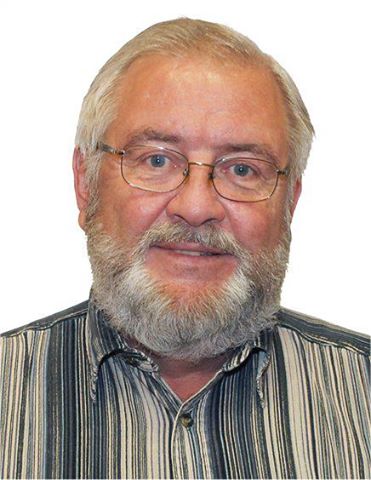|
|
|

Keynote Speakers
As Jordan is in the midst of an energy revolution investing in energy solutions to solve its energy problems across the board, this year's MESM will feature an invited session by experts from Europe in the field of Nuclear, Wind and Solar energy, so that they can share their knowledge with local industry and academia, active in the aforementioned fields.
Intelligent Electrical Energy Distribution & Consumption: SMARTGRID

|
Janos-Sebestyen Janosy |
Abstract
The methodology and structure of our electrical grids were invented at the end of the 19th century. Highly centralized infrastructure: the big power plants are connected via transformers and transmission lines to the local utilities. Steam engines – now turbines – are running and the frequency is controlled. Metering is mostly one-way only: it is difficult to sell even small amount of energy to the national grid.
Electrical energy is still not stored; production should be always equal to the consumption. Customers are not participating in the control process; everyone can draw as much energy as he/she pleases at any time, regardless to the balance of the supply and demand, usually at fixed tariffs. Earlier at least the rotating machines supported the control: slower rotation meant less energy is needed.
We do not want blackouts like the huge one affecting the whole east coast of US in 2003. Lives were lost, and it caused huge financial and other damages. Our networks nowadays used to be redundant, diverse, self-diagnosing, self-healing, distributed, capable to degrade stepwise, without collapsing, and even partially self-reliant. Something similar should happen to the electrical grids, too. They should be smart grids.
Centralized networks are not suited well to integrate numerous, distributed small energy producers: renewables, as photovoltaic cells or wind turbines. They are unpredictable and there is no storage in the network: that means conventional power plants have to run at reduced power in order to be ready to take over the load at whenever the unpredictables are giving up. It is economically not feasible.
There are many ideas and efforts spent to enhance the situation, with or without creation of minigrids. They will be presented in general together with some advanced electricity storage methods.
Curriculum Vitae
Janos Sebestyen JANOSY is working for the Atomic Energy Research Institute which is part of the Centre for Energy Research of the Hungarian Academy of Sciences since 2012. He is a Senior Researcher since 1974, former Head of the Simulator Development Department 1994-2011, Senior Consultant to the Technical and Scientific Support Organization since 2012. He is “Honorary Life Fellow” of the UK Simulation Society.
J.S. Janosy has published over 70 scientific publications in international journals and conferences. His main scientific interests: modeling and simulation, real-time simulation and simulators, nuclear, fossil and renewable energy production, energy distribution, smart electrical grids and energy storage.
He participated, and later managed several industrial projects connected to the mentioned topics. He is married with two grown-up married daughters, having three grandchildren. He is a Ham Radio operator (radio amateur) since 1965, mostly on short-wave bands with call sign HA5GN. He is active in shooting sports.
Reactive power control for photovoltaic power plants

|
Mircea-Emil Stremtam |
Abstract
This presentation describes the practical implementation of a custom reactive power control strategy on a 9MW installed power photovoltaic plant, as an integrated component of a SCADA system, in the context of the instability generated by meteorological conditions and their impact on the quality of the energy delivered through power grid.
You can download the full paper here in doc format. ![]()
Curriculum Vitae
You can download his full cv here in jpg format(part1 and 2) ![]()
Numerical Modeling of Thin-Film Solar Cells: SCAPS software examples
|
Samira Khelifi |
Abstract
Measurements tools are largely used to obtain data concerning the optical and electronic properties of solar cells. Nevertheless, photovoltaic devices and in particular modern thin-film solar cells have complicated structures giving rise to many non-idealities phenomena, which makes the explanation of the cells behavior intricate. Thus, numerical simulation tools are required for a realistic prediction of the solar cells characteristics.
In PV, numerical modeling is mainly used to gain insight into the details of the physical operation of solar cells and develop a link between materials properties and the characteristics of the solar cells, and therefore design and optimize the cell structures.
Nowadays, several modeling tools specific to thin-film solar cells are available to the PV community. An overview on modeling of thin-film PV devices will be presented and a number of those simulation tools will be introduced together with a short discussion about their possibilities and limitations. A detailed study will be dedicated to the modeling software tool SCAPS, developed at ELIS department of Gent University (Belgium). Some examples will be presented on modeling results and achievement for different thin-film devices (CdTe, CIGS, CZTSe, Si, GaAs, Organics,…).
Curriculum Vitae
Samira Khelifi is working as a post-doctoral researcher at ELIS Department of Gent University (Belgium). She has received her PhD degree in Engineering Sciences-Applied Physics from University of Gent in 2010. Her main expertise is electrical characterization and numerical modeling of thin-film solar cells. Since 2009, she has been active in PV research and collaborated with many partners within different Belgian and European projects, as participant and executer. Samira Khelifi is author and coauthor of more than 40 publications in international journals and conference proceedings.














